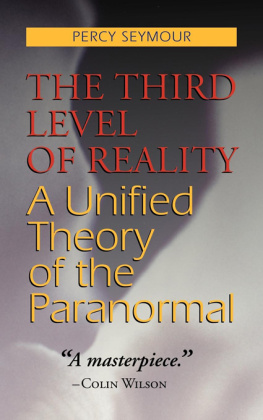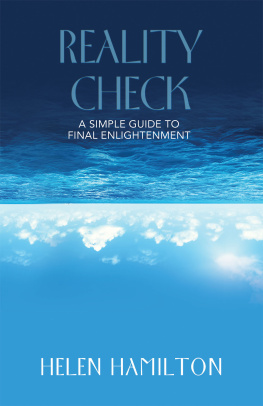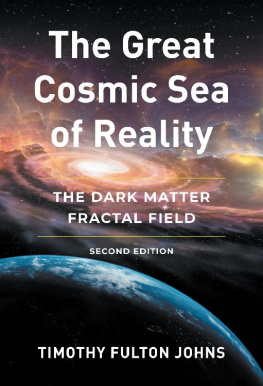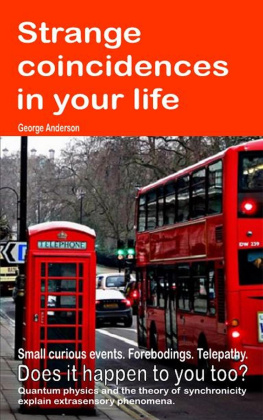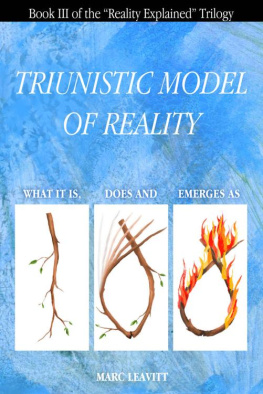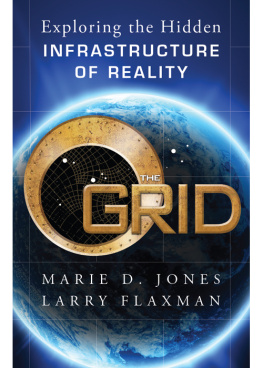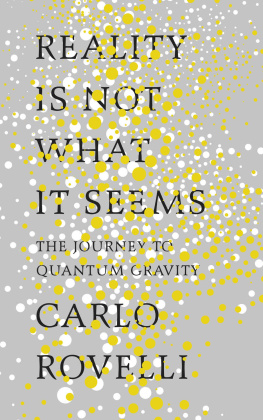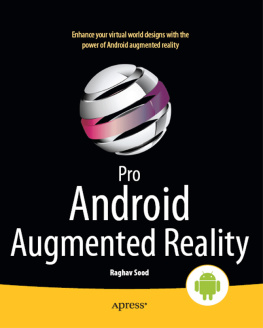The Third Level of Reality
Copyright 2003 Percy Seymour
All rights reserved. No part of this book may be used or reproduced in any manner whatsoever without prior written permission except in thecase of brief quotations embodied in critical articles or reviews. For information, address Paraview Press, P.O. Box 416, Old Chelsea Station, New York, NY 10113-0416, or visit our website at www.paraviewpress.com.
This is a reprint, with a new foreword, of a book entitled
The Paranormal: Beyond Sensory Science
originally published by Arkana, Penguin Books, in 1992.
Cover design by smythtype
ISBN: 1-931044-47-3
Library of Congress Catalog Card Number: 2003102795
To Dianna and Bruce
Foreword
I regard Percy Seymour as one of the boldest and most exciting scientific thinkers of our time. He is one of a small group of pioneers who have created a revolution, which includes Michel Gauquelin, David Bohm, Frijhof Capra, and Rupert Sheldrake. Yet although perhaps the least known, he is, in many ways, the most accessible of this group, and I regard one of his books, The Third Level of Reality [formerly known as The Paranormal], as a masterpiece. This is his most comprehensive and, for me, his most exciting book. I would suggest that it is as important as The Tao of Physics, A New Science of Life, or Wholeness and the Implicate Order.
He begins with a simple but brilliant account of modern physics, including the theory of relativity, quantum theory, and the latest speculations about quarks and superstrings. He also attaches particular importance to what has become known as Bells Inequality Theorem. John Bell demonstrated that if two particles (such as photons) collide then fly apart at the speed of light, they can still influence one another; if one changes direction, so does the otherin spite of Einsteins assertion that the speed of light cannot he exceeded, and that communication should therefore be impossible. Bells theorem has since been demonstrated in the laboratory and it seems to show that there is a sense in which all parts of the universe are connected. Separateness, as Bohm also thought, is a kind of illusion.
After explaining quark theory, superstring theory, and the more recent bootstrap theory, Seymour suggests his own theory of elementary particles and their interactionthe plasma space theory. A plasma is a hot gas whose atoms have had the outer electrons stripped off through collisions. They are known as ions. The ions and the freed electrons react to magnetic fieldsthey will thread along the lines of force like beads on a string. What Seymour is suggesting is that, in addition to ordinary space, there is another kind of spaceplasma space, which is threaded with lines of force. Seymour believes the universe can only be understood in terms of what he calls cosmic magnetic fields.
In 1989, Seymour saw the Northern Lights near Plymouth. It is unusual to see them this far south, but he realized that the explanation was that three or more planets were in line with the sun, changing the direction of the solar wind (made of plasma), which causes the Aurora Borealis.
It was this, and his theory of plasma space, that gave rise to the thought that the astrological observations of Gauquelin may be explained in terms of lines of magnetic force. And when these lines of force are plucked by an encounter with another force, they vibrateor resonatelike a plucked violin string. We could think of the solar system as a kind of cats cradle of lines of force between the planets, all resonating like strings, which in turn produce an effect on the magnetic field of the earth. And Seymour suggests that newborn babies are suddenly subjected to this symphony as they emerge from the womb, and that the tune we hear affects us for the rest of our lives.
The Third Level of Reality goes on to explore even more controversial aspects of his plasma space theory. He discusses the strange evidence that has accumulated from recent cases of twins. The Jim twins from Ohio were separated at birth and met for the first time 39 years later. Both had been named Jim by their adoptive parents; both had dogs called Troy; both had worked as gas station attendants, then for the same hamburger chain; both had been married twice, first to girls called Linda, then to girls called Betty; and both drove Chevrolets and took their holidays at the same time of year on the same stretch of beach in Florida.
Several other pairs of twins had died at the same moment; when a girl called Peg was killed in a car crash, the steering column penetrating her chest, her twin Helen woke up with an agonizing pain in her chest, and died on the way to the hospital. In Seymours theory, the twins remain connectedlike Bells particlesand the various coincidences are due to this connection.
Seymour goes on to discuss telepathy, ghosts, doppelgangers (psychic doubles), and precognition, and shows how all can be neatly fitted neatly into his theory. It can be seen why I regard Percy Seymour as one of the most exciting minds in modern science.
Colin Wilson
Introduction
Why, all the Saints and Sages who discussd
Of the Two Worlds so learnedly, are thrust
Like foolish Prophets forth; their Words to Scorn
Are scatterd, and their Mouths are stopt with Dust.
Edward Fitzgerald, The Rubiyt of Omar Khayym
Science is news. Newspapers, magazines, radio and television all carry items, almost daily, about some new scientific discovery or theory. It is also the age of the media pundit in the field of science, usually science correspondents, consultants and writers. Like most pundits they state their personal preferences, or dislikes, for one theory or another with authority and certainty. Some defend current scientific views with evangelical zeal, and wholeheartedly support present-day science with the unquestioning dedication that one normally associates with religious fanatics. For them scientific fundamentalism is the religion of the twentieth century. News is about what is happening here and now. The immediacy of the very latest news allows little respect for the history of science. Science journalists have done a great service to science by informing the public about the facts of present-day science, and the possible social implications of current scientific research, but many have done science a disservice by failing to clarify the doubts and uncertainties surrounding the latest discoveries and may have misled the public into accepting modern science as some new form of received truth. Some of them do so because they themselves cannot cope with the doubts and uncertainties that exist in most areas of science. However, many do so because they received their science education at some institute of higher education, a university or polytechnic, which did little to expose them to the nature, history and philosophy of science. In this introduction I am going to argue that it is necessary to inform the public and especially science undergraduates about the history of science, and I am also going to explore the possibility of using the history of science to enlighten us about some of the problems facing scientific thought today. Science is very much concerned with argument and debate. In order to convey the vigorous flavour of the discussions which have gone on over the years, I shall quote the words of the chief protagonists of conflicting views on the nature and state of science.

